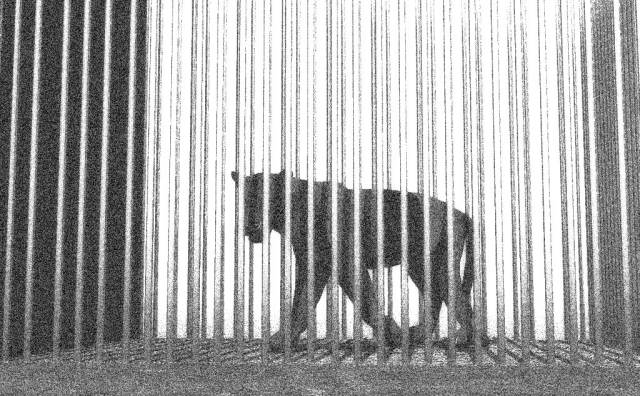
A number of years ago, I put Rilke's "The Panther" on my web site. Since then, I have received a number of e-mails berating the translation I use and suggesting another. I have read each of those translations, and still prefer the one I originally posted. I have decided, however, to post alternate translations of the poem so that others can decide for themselves which is the best. My favorite translation, as well as the interpretations of the poem by myself and others are on this page. Since creating this page, I have had many people submit alternate translations to me. It seems that there is quite a cottage industry in translating this poem! I've gotten so many (16 as if October 2006!), that I had to create a separate page for all of them. For alternate translations, go to myPanther Translations Page Make sure you come back though!
In 1905 Rilke moved to Meudon, France to take a job as the secretary of Rodin. When Rilke told Rodin that he had not been writing lately, Rodin's advice was to go to the zoo (the Jardin des Plantes) and look at an animal until he truly saw it. Here is the result (as translated by Robert Bly):
|
THE POEM
1. From seeing the bars, his seeing is so exhausted
5. The lithe swinging of that rhythmical easy stride
9. Only at times the curtains of the pupil rise
|
THE INTERPRETATION
In lines 1 and 2, Rilke is commenting on the hopelessness of imprisonment. The prisoner is numb from seeing the same thing every day. The panther can have nothing outside its cage, so what is the point in seeing any further than the bars of the cage itself? Discussing the figurative language of the poem is somewhat problematic because the poem is translated, and each translation uses different figurative language. Much the same holds true for the sound devices and imagery. Discussing the imagery is slightly easier though. In all translations there is similar strong imagery regarding the movements of the panther. First, Rilke talks about the panther in it's entirety . . . how it moves, how it acts, how it thinks. He paints a bleak picture then breaks the panther down into parts (the hubs of its joints, its eyes, etc). In essense, the imagery of the poem deconstructs the panther to symbolize how the panther is taken apart by being caged. At the end of this deconstruction, the panther symbolically "dies." |
Klaus J. Peter found this site and shared with me not only his own translation of The Panther (which is on the other translations page), but also this wonderful sketch inspired by The Panther, reproduced here with his kind permission. Thanks Klaus!

Care to add your own comments/interpretation? Then please tell me what you think and I will add your ideas here for others to read. Please explicitly state your desire/permission for me to add your comments to this page in your e-mail.
![[To Main Poetry Page]](../to-poetry.jpg)
|

|
![[To Home Page]](../../beckoning.jpg)
|